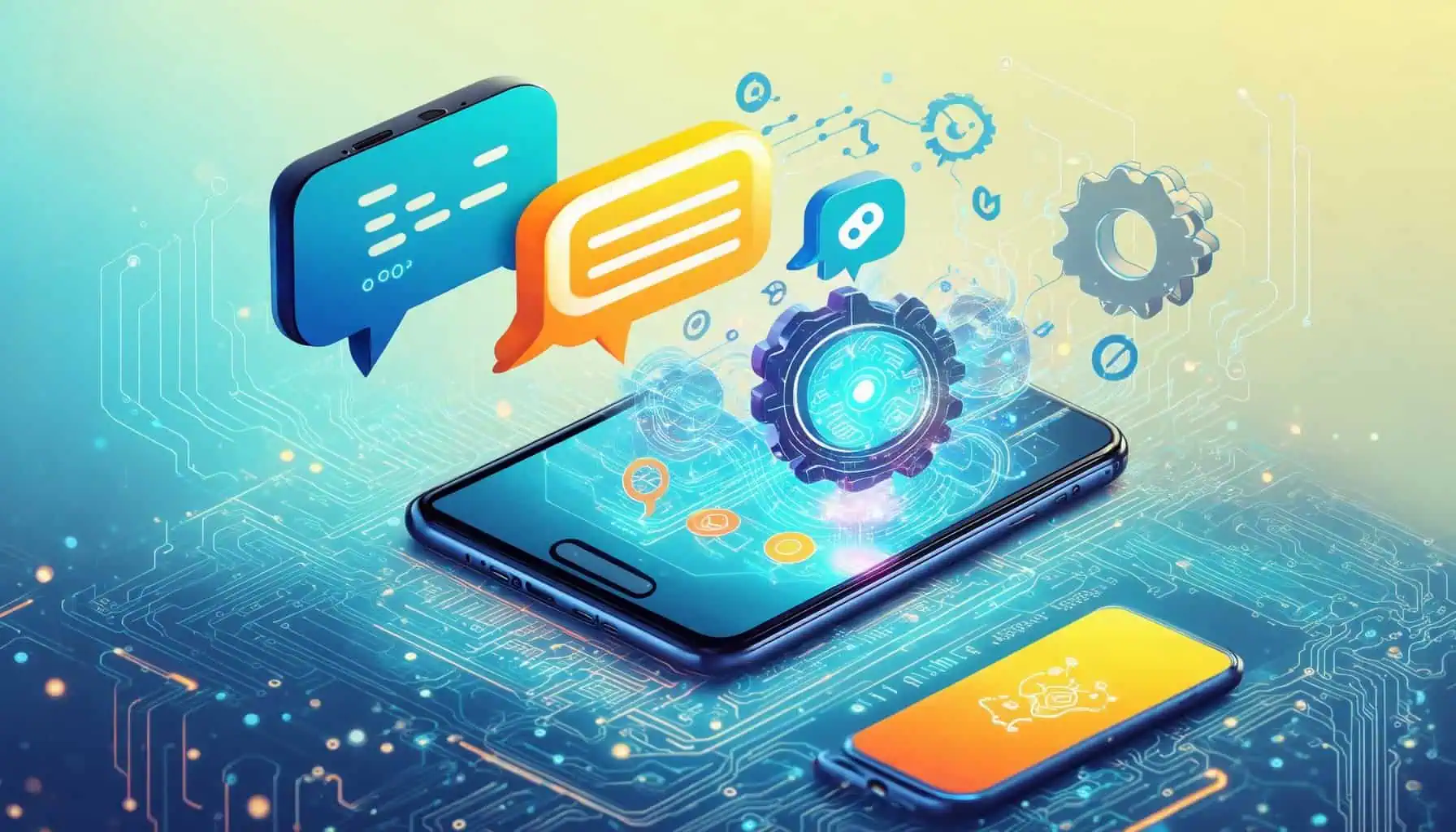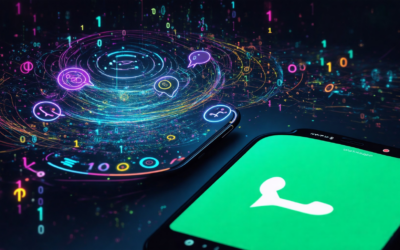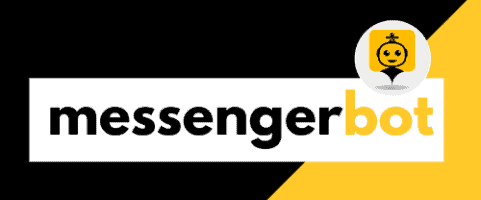Key Takeaways
- Integrating a chatbot for mobile apps enhances user engagement and streamlines customer support for both iPhone and Android users.
- Key features of effective mobile app chatbots include automated responses, personalization, and multilingual support.
- Follow eight essential steps to create a chatbot, including defining its purpose, choosing the right platform, and optimizing based on user feedback.
- Utilize popular platforms like Dialogflow and IBM Chatbot Solutions for seamless integration and advanced functionalities.
- Explore free chatbot options such as Freshchat and Tidio that can enhance customer engagement without incurring costs.
- Understand the cost of chatbot development varies significantly based on complexity, features, and customization needs.
In today’s fast-paced digital landscape, integrating a chatbot for mobile apps has become essential for enhancing user engagement and streamlining customer support. This article will guide you through the essential steps to create an effective chatbot for your mobile application, whether you’re targeting iPhone or Android users. We will explore what chatbots are and how they work, delve into key features necessary for mobile app development, and discuss best practices for seamless integration. Additionally, we will address common queries such as whether you can make your own chatbot, the costs associated with chatbot development, and the top free chatbot options available for both Android and iPhone. By the end of this article, you’ll have a comprehensive understanding of how to leverage a mobile app chatbot to elevate your app’s functionality and user experience.
How to create a chatbot for a mobile app?
What are chatbots and how do they work?
Chatbots are sophisticated software applications designed to simulate human conversation through artificial intelligence (AI). They can interact with users via text or voice, providing automated responses to inquiries and facilitating various tasks. Essentially, a chatbot for mobile app serves as a virtual assistant, enhancing user engagement and streamlining communication.
Understanding what is a chatbot involves recognizing its core functionalities. Chatbots operate using natural language processing (NLP) to interpret user inputs and generate relevant responses. They can be integrated into various platforms, including mobile apps, websites, and messaging services, making them versatile tools for businesses aiming to improve customer interactions.
Key features of a chatbot for mobile app development
When developing a mobile app chatbot, several key features should be considered to enhance user experience and functionality:
- Automated Responses: Chatbots can provide instant replies to user queries, reducing wait times and improving customer satisfaction.
- Personalization: By leveraging user data, chatbots can tailor interactions, making conversations more relevant and engaging.
- Multilingual Support: A chatbot that can communicate in multiple languages broadens its accessibility, catering to a diverse user base.
- Integration Capabilities: Seamless integration with existing systems, such as CRM or e-commerce platforms, enhances the chatbot’s utility.
- Analytics and Reporting: Tracking user interactions and feedback helps in optimizing the chatbot’s performance and understanding user behavior.
How to create a chatbot for a mobile app in 8 steps
Creating a chatbot for a mobile app involves several critical steps:
- Define the Purpose of Your Chatbot: Establish a clear objective for your chatbot, such as customer support, lead generation, or user engagement. Understanding the primary function will guide your design and development process.
- Choose the Platform for Deployment: Decide where your chatbot will be integrated. Options include messaging platforms like Facebook Messenger, standalone mobile apps, or websites. Each platform has unique features and user expectations.
- Select a Chatbot Development Framework: Choose a suitable chatbot development platform or framework. Popular options include Dialogflow, Microsoft Bot Framework, and Botpress. These platforms offer tools for natural language processing (NLP) and easy integration with mobile apps.
- Design the Conversation Flow: Utilize a chatbot editor to map out the conversation flow. Create a script that anticipates user queries and provides relevant responses. Incorporate decision trees to guide users through various scenarios.
- Implement Testing Procedures: Conduct thorough testing of your chatbot to identify bugs and improve user experience. Use A/B testing to evaluate different conversation flows and responses, ensuring the chatbot meets user needs effectively.
- Train Your Chatbot: Utilize machine learning techniques to train your chatbot on real user interactions. This process enhances its ability to understand and respond to diverse queries accurately. Regular updates and retraining are essential for maintaining performance.
- Gather User Feedback: After deployment, actively collect feedback from users to identify areas for improvement. Use surveys or analytics tools to assess user satisfaction and engagement levels.
- Continuously Optimize: Regularly update your chatbot based on user feedback and emerging trends in AI and NLP. Stay informed about advancements in chatbot technology to enhance functionality and user experience.
For further insights, refer to resources such as the “Chatbots: A New Approach to Customer Engagement” report by Gartner and the “State of Chatbots” report by Drift, which provide valuable data on chatbot effectiveness and user preferences.

Can I integrate a chatbot in my app?
Integrating a chatbot into your mobile app can significantly enhance user engagement and streamline customer support. Here’s a comprehensive guide to effectively implement chatbot integration:
- Choose the Right Chatbot Platform: Select a chatbot platform that aligns with your app’s goals. Popular options include IBM Chatbot Solutions, Microsoft Chatbot Services, and Google AI. These platforms offer robust APIs and SDKs for seamless integration.
- Define Use Cases: Identify specific use cases for the chatbot within your app. Common applications include customer support, FAQs, booking systems, and personalized recommendations. Clearly defined use cases will guide the development process.
- Integrate the Chatbot:
- Backend Integration: Your development team will need to integrate the chatbot’s API into your app’s backend. This involves setting up endpoints to send user queries to the chatbot and receive responses.
- Frontend Implementation: Design a user-friendly interface that allows users to interact with the chatbot. Ensure the chat window is easily accessible and visually appealing.
- Testing and Optimization: Conduct thorough testing to ensure the chatbot responds accurately and efficiently. Gather user feedback to identify areas for improvement. Regularly update the chatbot’s knowledge base to enhance its performance.
- Monitor Performance: Utilize analytics tools to track user interactions with the chatbot. Metrics such as user satisfaction, response time, and engagement rates will provide insights into the chatbot’s effectiveness.
- Compliance and Security: Ensure that your chatbot complies with data protection regulations, such as GDPR. Implement security measures to protect user data during interactions.
By following these steps, you can successfully integrate a chatbot into your mobile app, improving user experience and operational efficiency. For further reading, consult resources from industry leaders like IBM and Microsoft, which provide insights on chatbot trends and best practices.
Best practices for mobile app chatbot integration
To ensure a successful integration of a chatbot for mobile app, consider the following best practices:
- Keep It Simple: Design the chatbot to handle straightforward queries effectively. Avoid overwhelming users with complex interactions.
- Personalize Interactions: Use user data to tailor responses and recommendations, enhancing the overall user experience.
- Provide Human Backup: Ensure users can easily reach a human representative if the chatbot cannot resolve their issues.
- Regular Updates: Continuously update the chatbot’s knowledge base to reflect new information and user feedback.
- Test Across Devices: Ensure the chatbot functions seamlessly across different mobile devices and operating systems, including Android and iOS.
Implementing these best practices will not only enhance the functionality of your mobile chatbot but also improve user satisfaction and engagement. For more insights on chatbot features, visit our features page.
Is there a free chatbot app?
Yes, there are several free chatbot apps available that can enhance customer engagement and streamline communication. Here are some of the best options:
- Freshchat: Freshchat is a user-friendly chatbot platform that allows businesses to engage with customers through various messaging channels. It offers features like automated responses, live chat, and integration with other tools, making it a reliable choice for enhancing customer loyalty.
- Tidio: Tidio combines live chat and chatbot functionalities, providing an intuitive interface for businesses. It allows for real-time communication and can be easily integrated into websites. Tidio’s free plan includes essential features, making it suitable for small businesses.
- Chatfuel: Chatfuel is a popular choice for creating chatbots on Facebook Messenger. It allows users to build bots without coding, offering templates and a visual interface. The free version supports basic functionalities, ideal for businesses looking to engage with customers on social media.
- ManyChat: ManyChat specializes in Facebook Messenger bots and offers a free plan that includes automation and broadcasting features. It’s particularly useful for marketing campaigns and customer interaction on social media platforms.
- HubSpot Chatbot Builder: HubSpot provides a free chatbot builder as part of its CRM platform. This tool allows businesses to create chatbots that can qualify leads, book meetings, and provide customer support, all integrated within HubSpot’s ecosystem.
- Landbot: Landbot offers a unique approach to chatbots with its no-code interface, allowing users to create conversational experiences for websites. The free plan includes basic features, making it accessible for startups and small businesses.
- Zoho SalesIQ: Zoho SalesIQ includes a free chatbot feature that helps businesses engage visitors on their websites. It offers live chat and visitor tracking, making it a comprehensive tool for customer interaction.
- MobileMonkey: MobileMonkey provides a free chatbot platform that works across multiple messaging channels, including SMS and web chat. It is designed for marketers and offers tools for lead generation and customer engagement.
- Dialogflow: Developed by Google, Dialogflow is a powerful tool for building conversational interfaces. While it requires some technical knowledge, it offers a free tier that allows developers to create sophisticated chatbots for various platforms.
- Botpress: Botpress is an open-source chatbot framework that allows users to build and deploy chatbots for free. It is highly customizable and suitable for businesses looking for a tailored solution.
These chatbot applications not only improve customer engagement but also help businesses increase their return on investment (ROI) by automating interactions and providing timely support. For more detailed insights on chatbot effectiveness, you can refer to studies published by sources like Gartner and Forrester Research, which highlight the growing importance of chatbots in customer service strategies.
Comparing free chatbot apps for Android and iPhone
When considering a chatbot for mobile app, it’s essential to evaluate the options available for both Android and iPhone users. Here’s a comparison of some of the top free chatbot apps:
- Freshchat: Available on both Android and iPhone, Freshchat provides a seamless experience across devices, ensuring that businesses can engage customers effectively regardless of their platform.
- Tidio: Tidio’s mobile app is compatible with both Android and iOS, allowing businesses to manage customer interactions on the go.
- ManyChat: This app is primarily focused on Facebook Messenger, making it an excellent choice for social media marketing on both platforms.
- HubSpot Chatbot Builder: As part of the HubSpot ecosystem, this chatbot builder is accessible via mobile devices, providing flexibility for users managing customer relationships.
- Dialogflow: While more technical, Dialogflow can be used to create chatbots for both Android and iPhone apps, making it a versatile choice for developers.
Choosing the right chatbot mobile app depends on your specific needs, such as the platforms you want to target and the features you require. Each of these options offers unique benefits that can enhance user engagement and streamline communication.
Is there a chatbot for iPhone?
Yes, there are several chatbots available for iPhone users. One of the most popular options is ChatBox AI, which can be found on the App Store. ChatBox AI is an advanced AI chat assistant that utilizes state-of-the-art machine learning models to provide a versatile platform for various tasks, including writing assistance, problem-solving, and brainstorming.
In addition to ChatBox AI, another noteworthy option is Replika, an AI companion designed to engage in meaningful conversations and help users improve their mental well-being. Replika learns from interactions, providing personalized responses that adapt to the user’s preferences.
For those interested in integrating chatbot functionalities into messaging platforms, the Messenger Bot is a viable choice. It allows users to create automated responses and engage with customers directly through Facebook Messenger, enhancing communication efficiency.
These chatbots not only offer practical assistance but also leverage the latest advancements in artificial intelligence to improve user experience. For more information on AI chatbots and their applications, you can refer to sources like the Journal of Artificial Intelligence Research and industry blogs such as TechCrunch and VentureBeat.
What is chatbot on my phone and how to use it?
A chatbot on your phone is a software application designed to simulate conversation with human users, especially over the Internet. These chatbots can be found in various forms, including dedicated apps or integrated within messaging platforms. They utilize natural language processing (NLP) to understand user queries and provide relevant responses.
To use a chatbot on your phone, follow these steps:
- Download a chatbot app: Search for chatbot applications like ChatBox AI or Replika on the App Store and install them.
- Create an account: Some chatbots may require you to create an account to personalize your experience.
- Start chatting: Open the app and begin interacting with the chatbot by typing your questions or commands.
- Explore features: Many chatbots offer additional functionalities, such as reminders, scheduling, or even games, so be sure to explore what your chosen chatbot can do.
By leveraging these mobile chatbots, users can enhance their productivity, receive instant support, and enjoy engaging conversations, all from the convenience of their smartphones.

Can I make my own chatbot?
Yes, you can create your own AI chatbot by following these comprehensive steps:
- Define Your Use Case: Clearly outline the purpose of your chatbot. Consider whether it will be used for customer service, personal assistance, or another function. Identifying the target audience and their needs is crucial for effective design.
- Select the Appropriate Channel: Determine where your chatbot will operate. Options include websites, messaging platforms like Facebook Messenger, or mobile applications. Each channel has unique features and user expectations that can influence your design.
- Choose a Tech Stack: Select the technologies and tools you will use to build your chatbot. Popular frameworks include Microsoft Bot Framework, Google Dialogflow, and Rasa. These platforms offer various functionalities that can enhance your chatbot’s capabilities.
- Build a Knowledge Base: Create a comprehensive knowledge base that your chatbot will draw from. This should include FAQs, product information, and other relevant data. A well-structured knowledge base is essential for providing accurate and helpful responses.
- Design the Conversation Flow: Map out how interactions will occur. Use flowcharts to visualize the conversation paths and ensure that the chatbot can handle various user inputs effectively. Consider incorporating natural language processing (NLP) to improve understanding.
- Integrate and Test the Chatbot: Once built, integrate your chatbot with the chosen platform. Conduct thorough testing to identify and fix any issues. User feedback during this phase is invaluable for refining the chatbot’s performance.
- Launch and Monitor: After testing, launch your chatbot and continuously monitor its performance. Use analytics to track user interactions and identify areas for improvement. Regular updates based on user feedback will enhance the chatbot’s effectiveness over time.
By following these steps, you can successfully create a functional and engaging chatbot for mobile app tailored to your specific needs. For further reading on chatbot development, consider resources from reputable sources such as the Journal of Artificial Intelligence Research and industry blogs like Chatbots Magazine.
Tools to create your own chatbot for mobile
When it comes to building a mobile app chatbot, several tools can simplify the process:
- Chatbot Development Platforms: Tools like Brain Pod AI provide user-friendly interfaces for creating chatbots without extensive coding knowledge. They often include templates and drag-and-drop features to streamline development.
- Frameworks and Libraries: For those with programming skills, frameworks such as Rasa and Microsoft Bot Framework offer robust options for creating customized chatbots. These tools allow for deeper integration and advanced functionalities.
- AI and NLP Services: Integrating AI capabilities can enhance your chatbot’s performance. Services like Google Dialogflow and IBM Watson provide powerful NLP tools that help your chatbot understand and respond to user queries more effectively.
Choosing the right tools will depend on your specific needs, technical expertise, and the desired functionalities of your chatbot mobile app.
How much does it cost to have an AI chatbot?
The cost of implementing an AI chatbot can vary widely based on several factors, including the complexity of the bot, the technology used, and the specific features required. Here’s a breakdown of typical pricing:
- Basic Rule-Based Chatbots: These chatbots, which follow predefined scripts and respond to specific keywords, generally range from $2,000 to $10,000. They are suitable for simple tasks such as FAQs and basic customer service inquiries.
- Advanced AI-Powered Chatbots: For more sophisticated bots that utilize natural language processing (NLP) and machine learning capabilities, costs typically range from $10,000 to $50,000. These bots can understand context, learn from interactions, and provide personalized responses, making them ideal for complex customer interactions.
- Custom Development: If a business requires a highly customized solution, the costs can exceed $50,000. This includes bespoke features, integration with existing systems, and ongoing maintenance.
- Subscription Models: Some companies offer chatbot solutions on a subscription basis, which can range from $50 to $500 per month depending on the features and usage limits.
- Additional Costs: Businesses should also consider costs for training the bot, ongoing support, and updates, which can add to the overall investment.
For example, platforms like Messenger Bot provide user-friendly interfaces for creating chatbots, which can help reduce initial development costs, but businesses should still budget for the aforementioned expenses to ensure a robust and effective chatbot solution.
Breakdown of costs for chatbot mobile app development
When developing a chatbot for mobile apps, the costs can be influenced by various factors:
- Development Team: Hiring a skilled development team can significantly impact costs. Rates can vary based on location and expertise, with hourly rates ranging from $25 to $150.
- Platform Choice: The choice between developing a chatbot for Android or iOS can also affect costs. Each platform may require different development approaches and testing, potentially increasing the overall budget.
- Integration Needs: If the chatbot needs to integrate with existing systems or third-party services, additional development time and costs will be incurred.
- Maintenance and Updates: Ongoing maintenance is crucial for keeping the chatbot functional and up-to-date, which can add to the long-term costs.
Understanding these factors can help businesses make informed decisions when budgeting for their chatbot for mobile app development.
Factors influencing the price of a chatbot for mobile
Several key factors can influence the pricing of a chatbot for mobile:
- Complexity of Features: More advanced features, such as NLP capabilities and machine learning, will increase development costs.
- User Experience Design: Investing in a seamless user experience can lead to higher costs but ultimately results in better user engagement.
- Scalability: If a business anticipates high user traffic, building a scalable solution from the start may require additional investment.
- Compliance and Security: Ensuring that the chatbot complies with data protection regulations can add to development costs.
By considering these factors, businesses can better estimate the costs associated with their mobile chatbot project and plan accordingly.
What is a chatbot on Android?
A chatbot on Android is a software application designed to simulate conversation with users through text or voice interactions. These chatbots leverage artificial intelligence (AI) to understand and respond to user inquiries, providing a seamless communication experience. Android chatbots can be integrated into various applications, enhancing user engagement and offering support across multiple platforms. They are commonly used in customer service, personal assistance, and entertainment, making them versatile tools for mobile app developers.
Overview of chatbot for Android and its functionalities
Chatbots for Android come equipped with a range of functionalities that cater to diverse user needs. Key features include:
- Natural Language Processing (NLP): This allows chatbots to understand user queries in a conversational manner, making interactions more intuitive.
- 24/7 Availability: Android chatbots can operate around the clock, providing instant responses to user inquiries without the need for human intervention.
- Integration with Mobile Apps: These chatbots can be embedded within existing mobile applications, enhancing their functionality and user experience.
- Personalization: By analyzing user data, chatbots can offer tailored responses and recommendations, improving user satisfaction.
- Multilingual Support: Many Android chatbots can communicate in multiple languages, broadening their accessibility to a global audience.
What are chatbots on Android and how to choose the best one?
When considering chatbots on Android, it’s essential to evaluate their capabilities and how they align with your specific needs. Here are some factors to consider:
- Functionality: Determine what tasks you want the chatbot to perform, such as customer support, lead generation, or information retrieval.
- User Experience: Look for chatbots that offer a smooth and engaging user interface, ensuring that interactions are pleasant and efficient.
- Integration: Choose a chatbot that can easily integrate with your existing systems and platforms, such as CRM tools or social media.
- Scalability: Ensure the chatbot can grow with your business, accommodating increased user interactions without compromising performance.
- Support and Updates: Opt for chatbots from providers that offer ongoing support and regular updates to enhance functionality and security.
For more information on chatbot options, you can explore features of chatbots or check out chatbot pricing to find a solution that fits your budget.





